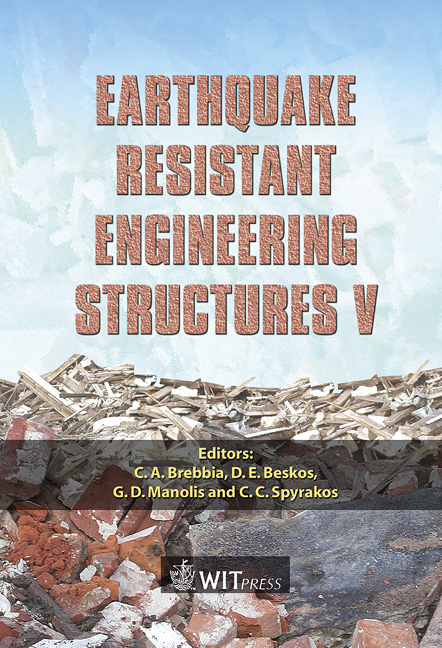Seismic Analysis And Design Of A Precast Concrete Framed Structure
Price
Free (open access)
Transaction
Volume
81
Pages
10
Published
2005
Size
806 kb
Paper DOI
10.2495/ERES050141
Copyright
WIT Press
Author(s)
A. G. Vlassis, C. C. Spyrakos & S. Tsoukantas
Abstract
This study presents the analysis and design of a single-storey industrial building planned to serve as a repair and maintenance facility for the Greek Railway Organization (GRO) near Athens. The structural system is a precast concrete frame. Several issues regarding modelling and analysis of the structure are identified and discussed. In order to increase the stiffness in one of the two orthogonal directions of the structure, diagonal steel braces interconnecting the upper part of the concrete columns are used. Two sets of analysis are performed to investigate the effect of the braces on the structural response. It is shown that seismic behaviour can be significantly improved with the addition of the new members. Furthermore, dynamic analysis is carried out to examine the effect of foundation on structural response. It is found that, due to terrain irregularities and arrangement of the structural system, use of single footings and link beams in one direction only is not adequate to uniformly distribute the seismic loads. It is shown that pile foundation can have a beneficial impact on behaviour by alleviating the effects of the inclined embankment and increasing the system stiffness. The enhancement of structural behaviour is further proved by the fact that the building resting on piles can meet the collapse prevention requirements even if it is analyzed under seismic loads corresponding to the highest seismic zone in Greece, with a maximum ground acceleration A=0.36g. Keywords: precast concrete frame, diagonal braces, pile foundation, collapse prevention.
Keywords
precast concrete frame, diagonal braces, pile foundation, collapse prevention.





